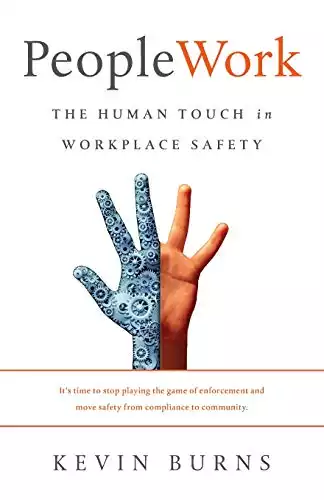We may receive compensation when you click on product links from our partners. For more information, please see our disclosure policy.
Over the past few months, significant shifts have occurred in the realm of workplace safety. As Baby Boomers retire, millennials ascend in
Businesses aim to attract and retain a workforce that aligns best with their objectives and contributes maximum value. Consequently, it’s not just about making adjustments but reimagining their office layouts and business practices. Central to this transformation is placing the health and safety of their employees at the forefront.
The emphasis on health and safety is gaining momentum as an increasing number of organizations identify concerns and implement effective measures. Here are some of the prevailing trends.
Greater Emphasize on Occupational Health and Safety
Over time, the focus on occupational health and safety in workplaces has intensified. This heightened attention stems from a growing understanding of the repercussions workplace accidents and illnesses can have on employees, as well as on a company’s overall productivity and profitability. In response, many organizations have tightened safety regulations, offered enhanced training to their staff, and formed safety committees to proactively identify and mitigate workplace risks. These measures have contributed to a decline in workplace incidents, bolstering employee well-being and enhancing business performance.
Businesses want to attract a workforce that will be the right fit for the job and retain those who bring the most benefit. For those reasons, they need not only to readjust but to start rethinking their office plans, and the way business is done.Click To TweetMental Health: A Top-of-Mind Priority
Another aspect that has been greatly reinforced in the last few years and influences safety culture considerably is the aspect of psychological risks. Workplace health and safety experts point out that psychological safety is the key to the kingdom of physical safety.
An environment that fosters a culture of openness, where everyone can express their genuine selves, enhances protection against emerging risks.
The topic of mental health expands into a broader conversation about well-being and the potential drawbacks of contemporary work methods, especially concerning
The emotional strain of the pandemic on employees who were no longer able to guarantee the financial constancy of their families or be certain of the longevity of their careers is indisputable. The shift to online operations for others was highly challenging, and the return to the office can be just as chaotic.
There is a need for a shift in our perception of health and wellness, beyond just emotional, psychological, and social needs. In 2023, we expect managers to prioritize the holistic well-being of working professionals. This trend has been emerging over the past few months but has never been more essential than now.
In the future, we may see many companies worldwide adopt this concept to compensate for the significant psychological, emotional, and physical strain that the pandemic has placed on their teams.
Creative Scheduling
The struggles of work-from-home parents, shift employees, healthcare workers, and frontline workers have been well documented. In 2023 we’re expecting employers to continue using creative employment strategies to decrease burnout and workplace fatigue. That said, we’re expecting employers to deploy:
Flexible Schedule Solutions
Flextime is a policy that allows workers to choose their work hours if a conventional nine-to-five workday doesn’t work for them. Business owners are still responsible for meeting productivity output and established goals. More often than not, they may even require workers to report to work for specific functions like meetings.
Shorter Workweeks
A shorter workweek basically enfolds 40 hours of work into fewer days. The most popular compression is a 4/10 model, where an employee works for 10 hours a day. Another model is the 9/80, which runs over a two-week cycle and offers workers two three-day weekends a month.
Rotating Shifts
The hybrid schedule or rotating shifts where workers report on alternate days or times to a physical office are helping employees maintain physical distance and keep productivity up and going. Many schools across different states are considering hybrid models to ensure student and teacher safety, and local administrations are using rotating shifts successfully, too. The idea is to allow workers to report to the office to complete tasks that must be done in person but reduce interaction between employees.
Incorporating Smart PPE
Personal protective equipment is crucial in ensuring that working professionals, particularly in engineering and construction industries, face the lowest-possible health risk at work. As we enter another pandemic year, protective gear should help reduce human contact between essential employees and the people for whom they care.
The latest tendencies in industrial safety include smart PPE and equipment that can monitor their wearer’s health by collecting critical data. Health data can consist of an employee’s blood pressure, heart rate, steps walked, blood oxygen levels, and vital signs. In 2023 health and manufacturing employees hope that PPE wear will also monitor employees’ alertness and fatigue. A thing that will help managers propose breaks and create schedules more efficiently.
Workplace safety is failing. Despite better procedures now in place on the job, people are still getting hurt. The problem lies in our thinking. We must shift the focus from rules to relationships.




